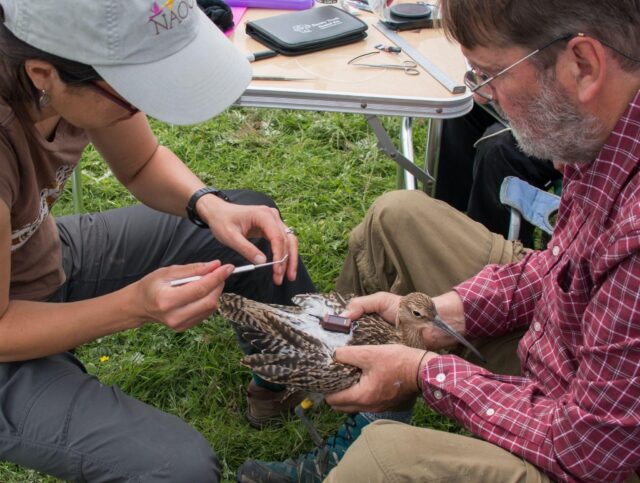Two Curlews fitted with GPS tags as part of a project to help boost numbers of the species in the East of England, are keeping scientists up to date with their movements using the mobile phone network.
Throughout July & August, over 80 young Eurasian Curlew have been released at Sandringham and Wild Ken Hill as part of a Natural England project to boost Curlew numbers in the East of England. All of the birds have been fitted with uniquely coded coloured leg rings to be able to identify them if they are seen later on. A sample have also been fitted with radio and GPS tags to be able to keep tabs on them following their release by monitoring their movements and behaviour. For the two Curlew fitted with GPS tags, the results are proving to be very interesting, allowing scientists to monitor the birds’ activities in ‘real time’ when the tags download daily locations over the mobile phone network.
After a few days, Curlew ‘0E’ began exploring its surroundings, checking out the fields adjacent to the release site before moving a little further afield and onto the Wash, only for short periods initially. Now, it is behaving just like the non-breeding Curlew that visit the Wash in large numbers over the autumn and winter, using the estuary around the mouth of the Ouse and the Nene rivers.
Curlew ‘3A’ has been less adventurous, mainly staying around the release site, although it has recently begun to explore the Snettisham Coastal Park, moving north and south along the outer sea wall.
Dr Sam Franks, Senior Research Ecologist at the British Trust for Ornithology, said, “These tags have revealed for the first time how young headstarted Curlew learn about the landscape into which they’ve been released. It has been fascinating to observe the different behaviour between individuals. Just like people with different personalities, some Curlew are more adventurous and exploratory, while others are more risk averse, avoiding novel conditions and sticking with what they know.”




